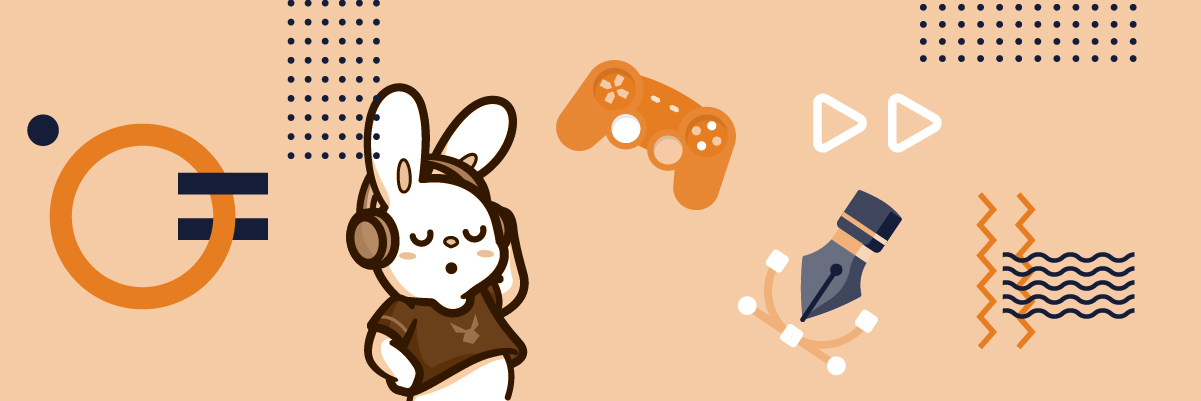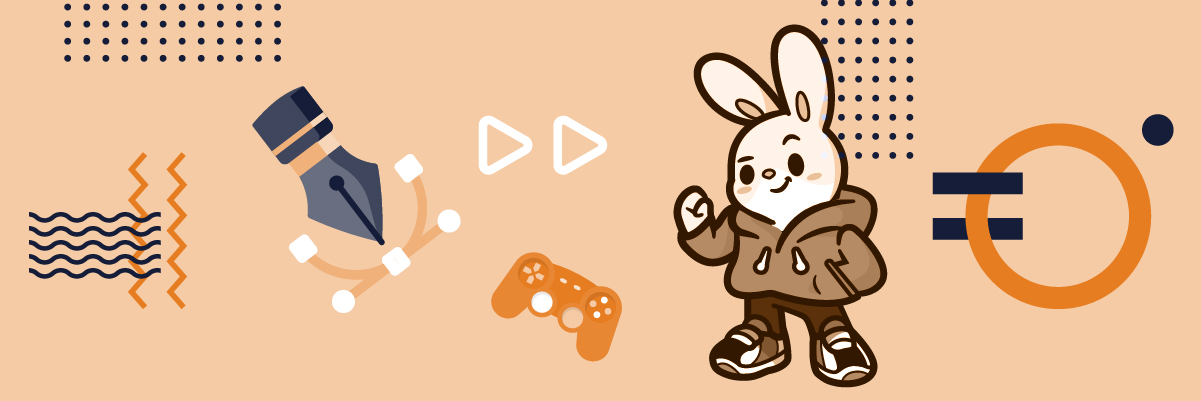When it comes to video game character design, that human element can take your characters far into the hearts of your players. Adding human characteristics to your characters can draw bonds between the players and characters and make the play more powerful. You work hard on your scripts and voice overs, now finalize the package by adding that human touch to your characters. You never know what impact this can have.
This post has been updated in September 2021.
The impact of characters in video games
It wasn’t so long ago that video game characters were colorful ghosts and frogs. We’ve come a long way since then, for sure. Now video game characters are often human, and very human-looking at that. And even if they’re boldly animated or animals, they still have human characteristics. Think about Mario – he’s been around a long time, but his human characteristics make him one of the most beloved characters in gaming.
Masterclass tells us that games need characters with solid and compelling characteristics and attributes. This goes beyond the physical characteristics, too, and we’ve been seeing all kinds of personalities in characters. Sure, the game needs an interesting plot and fun gameplay, but the characters are what makes it come alive. Think about your favorite TV show, let’s take Friends, for example (after all, who doesn’t love Friends?). The show would be completely different without the iconic characters. What if Monica didn’t love to clean or Phoebe wasn’t so eccentric? Their physical characteristics identify them, but so do their personalities, and that’s what makes a great video game character, too.
Positive and negative attributes
We often think of video games as having negative effects because of violent or unethical characters. However, they can also impart a positive effect when you include empathy, kindness, or confidence. The world is made up of all kinds of people; let your video games have them all, too. When a character can evoke sympathy, players resonate with them. This creates connections and someone the player cares about and can root for. And with negative characteristics, like cruel or mean, we can love to hate those characters, and yes, root against them. We all love a movie where the antagonist gets what’s coming to them. It can happen in a game, too. The key is to have those positive characters to not only connect with and help bring right to the game but to even be exemplars and models of desirable behavior.
Creating strong women
Female characters have come a long way in video games, from their start as princesses needing saving and scantily dressed, overly sexualized women who really played no part at all. However, we are seeing a shift to strong women who are protagonists in games, like Lara Croft. Video game character design is changing for female characters, and these women are not only looking more realistic, but they are showing strong, positive qualities, like thinking for themselves, intelligence, bravery, and independence. They hold conversations and have well-written scripts. And they beat up the bad guys.
It’s important not only for female players to have strong women in the games but also for the guys who are playing. It doesn’t hurt for them to see some strong women in the games they love. If you are designing video game characters, take this into account. The women in video games don’t just have to look one way, They should portray the strong characteristics we see in women throughout the real world.
Some great video game characters
Okay so we’ve told you why it’s important to have strong characters with human qualities in your video games, so now let’s take a look at some of the great ones:
Lara Croft from Tomb Raider – She’s a fierce warrior, highly intelligent, and a superior athlete. She’s been through a lot and we’ve seen her grow over the years. She doesn’t bother with the boring part of her aristocratic upbringing and instead strives for adventure and treasure hunting. She’s iconic and perhaps the most well-known and well-loved heroine in the video game world.
Nathan Drake from the Uncharted Series – He’s an adventurer like Lara, and his fans have seen him grow and mature, too. Like a goofy cross between Indiana Jones and Han Solo, he’s full of witty banter and charisma, plus he’s pretty handsome. With Tom Holland playing him in the upcoming movie, his personality can shine even more.
Geralt from The Witcher – Geralt is a tough guy with a hard shell. But he offers heartfelt moments and a soft side, and that’s what humanizes him. He may be stone-faced, but he cares about doing what’s right. His human characteristics beyond his strong looks, flow deep into his persona.
Chun-Li from Street Fighter – She’s been around since the early 1990s and is a strong, powerful woman who holds her own in the game. She’s definitely attractive, but not overly sexualized. And she was the first playable female game fighter. People say she’s the reason Street Fighter is as huge as it is.
Human elements in video game character design
Humanizing video game characters is crucial to the success of your game. And this applies even if your character isn’t human. Look at Yoshi or Tom Nook, for example. They may not be humans, but they sure have the characteristics. The thing about humanizing your characters is that is how your players will relate to them. It’s one thing to have a cute character, but when you put clothes on your animals or make your hero empathetic, you open whole new doors for reliability and connection.
Communication is essential in video games, and by humanizing the characters through design and voices, you’re going to get that communication. Remember, communication goes far beyond the script for the character. The voice over you choose for the character will have a huge impact. Try to imagine your favorite character with a different voice, that could include accent, dialect, depth, and tone. So when you choose that voice over, think about how you want your character to appear. And the voice can really set your character apart from all the others.

Physical attributes
What about the physical components of your video game character design? Here’s where all the fun happens. Communication is one of the most important things people do. When you allow your characters strong communication skills, you open them up to connection not just with other characters, but with the players. And that goes far beyond the voice. Think about their faces for a minute. It’s not really always enough that characters look human, but they have to act human. When you’re working with realistic characters, they need to show emotion, their faces have to respond, and their body language needs to be clear.
Technology is growing by leaps and bounds, and if you want to design a character with human qualities and emotions, you can. Think how far design has come over the past couple of decades. Forget the block characters from early video games, but even the development of humanizing characters since 2000 has changed. Your characters now show expression, emotion, and even empathy. When they connect, they come alive, and that hugely enhances the game.
Physical attributes are more than facial details and emotional responses. They’re the clothes your characters wear, their size, race, height, gender, hair color. The more your characters can represent the real population, the more your connection will thrive. Remember when video games were pretty much full of men? Then women entered the scene. Now we have a number of characters representing a number of genders. The same goes for race. You can create your character to be of any race or gender you want. All of this can expand your audience. Just as you make your characters more inclusive, you make your audience more inclusive.
How to begin
So you’re creating a game and starting to envision your character. Where do you even start? The beautiful thing is that this is your thing, you can create whoever and whatever you want. But the more you know about your characters, from the inside and out and from the beginning to now, the easier it will be to design them.
First off, who is your character? What gender, what age, what ethnicity? What are they like inside? They could be rough and gruff, soft and sweet, motherly and nurturing, independent and rugged. In fact, any human attribute you can think of, your character can have. And perhaps you want to think about their back story. After all, that helps mold them into who they are. Maybe they came from a rough childhood or another planet. Do they have a scar from a past injury? What about a special token or piece of jewelry they always wear that represents their past? Maybe your rough character loves classical music and you can tell us why. Those little things can tell a whole story.
Have fun and make them real
The key to video game character design is to have fun with it. Immerse yourself in your character and see who they become. The more real you can make them, the more they’ll resonate with your audience. Add those funny little quirks and characteristics, like a splattering of freckles or a love for anchovies. Make your character is an animal lover or a secret bookworm. When you humanize your video game characters, they really will come to life.
If this seems daunting on top of all the other video creation components, you can always reach out to our amazing designers at Bunny Studio. Don’t worry if you have the idea for your character but not the skills to create him; we can help. You may be focused on your video game script or backstories or any other component, but that’s no reason to let your character suffer.
When you work with our video game designers at Bunny Studio, they’ll listen to what you want and create your vision. How amazing will that be, seeing your vision come to life!
If you’re ready to hire a video game creator, let us know how we can help. We love this stuff!










